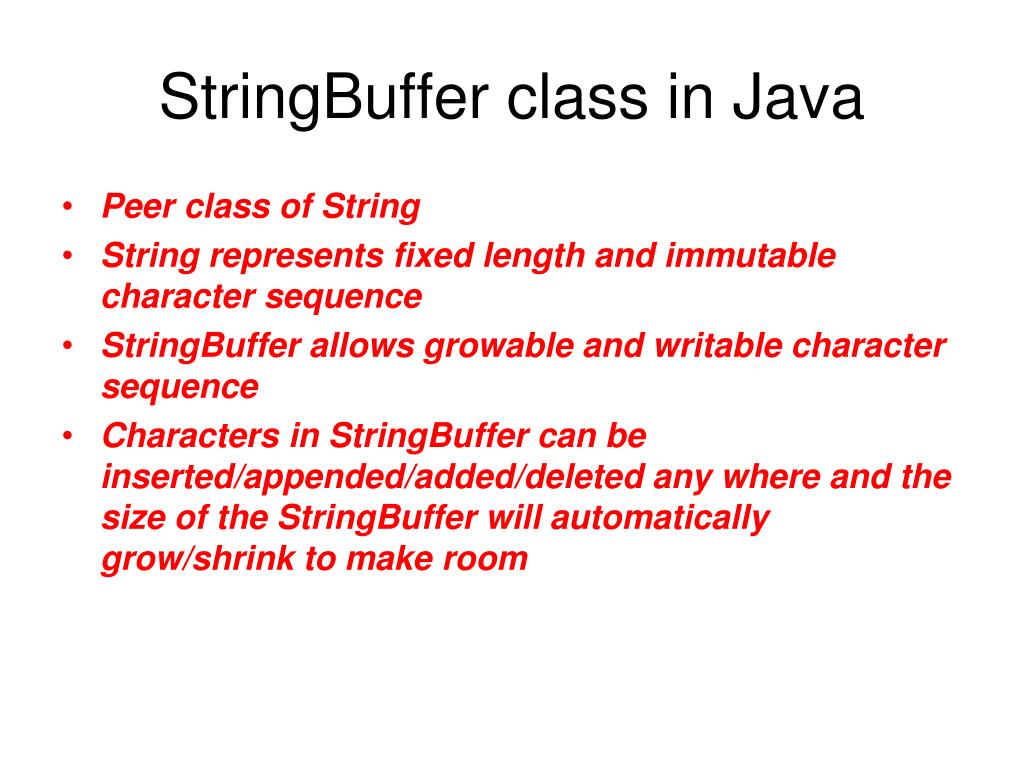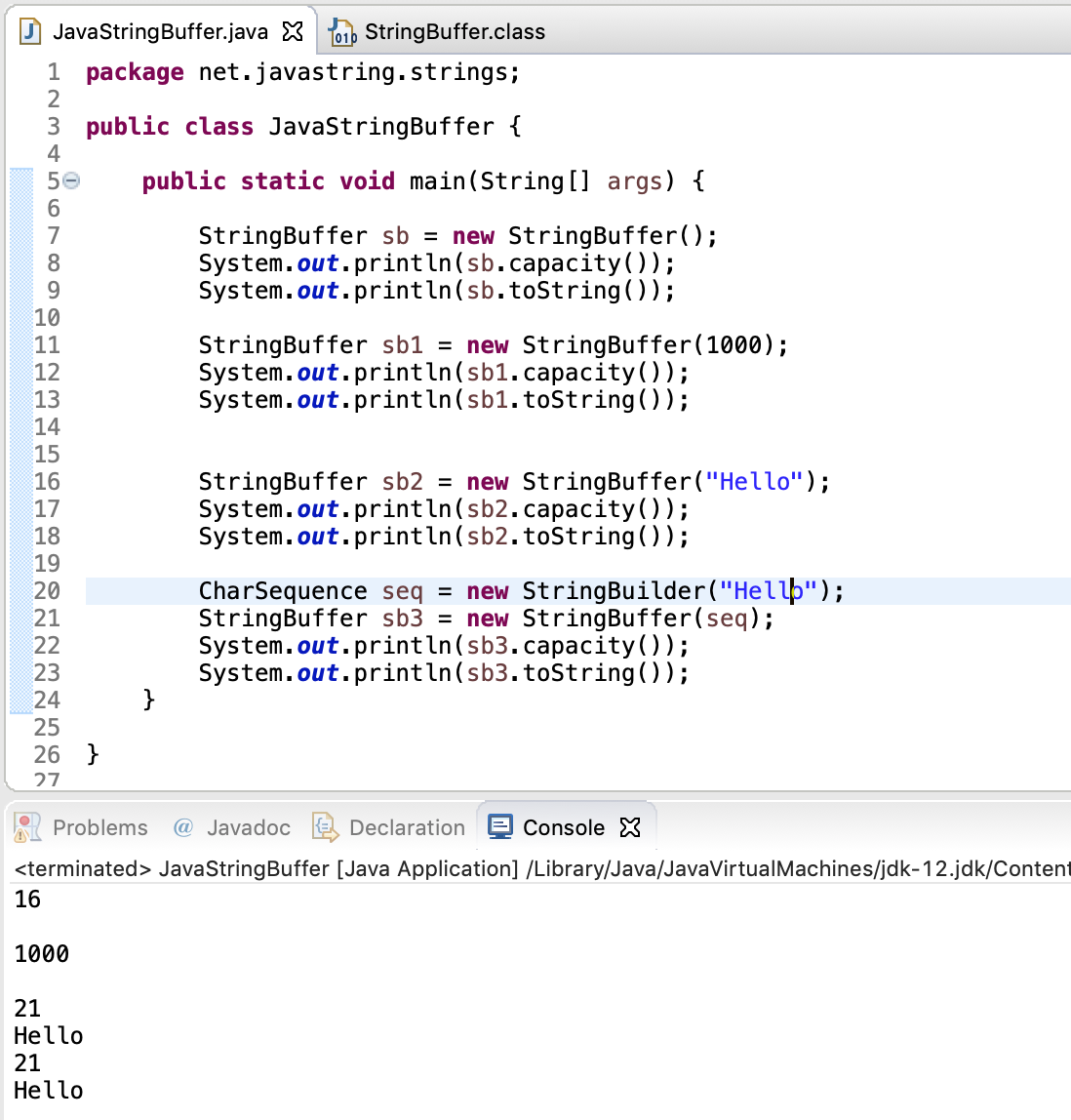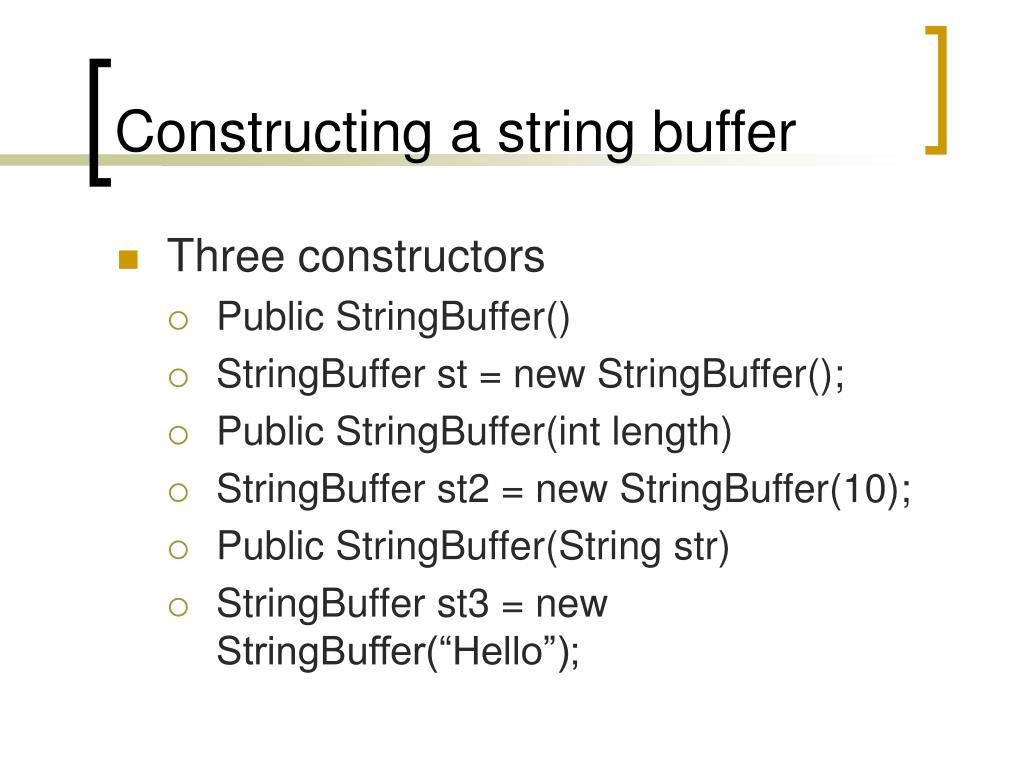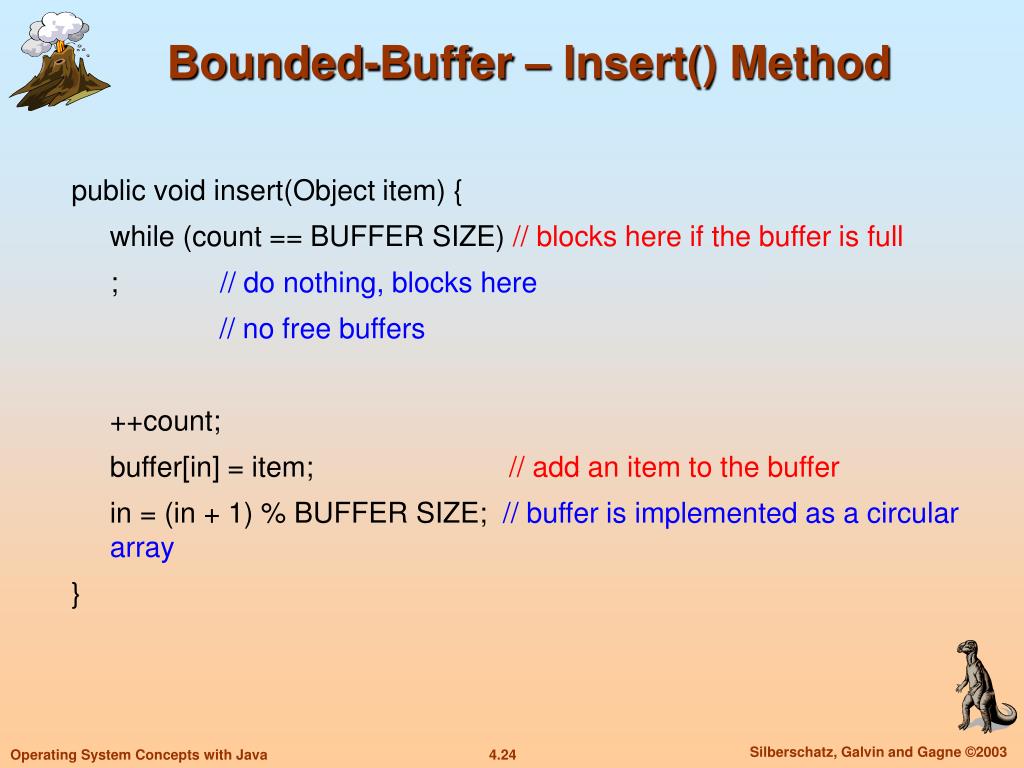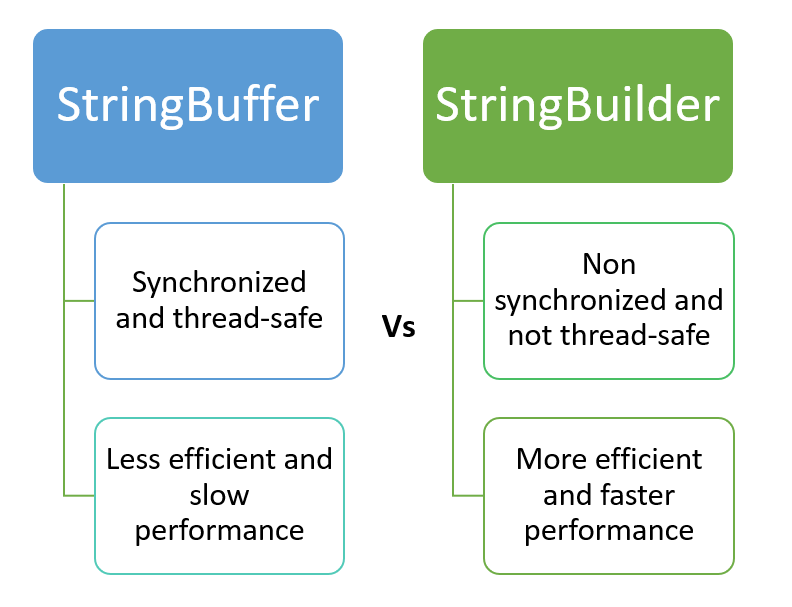String Buffer In Java Presentation
| Introduction to String Buffer in Java | ||
|---|---|---|
| String Buffer is a class in Java that is used to manipulate strings. It is similar to the String class, but with one key difference - string buffers are mutable. String buffers provide methods to modify, append, insert, and delete characters in a sequence. | ||
| 1 | ||
| Creating a String Buffer | ||
|---|---|---|
| To create a string buffer, you can use the constructor with no arguments - StringBuffer sb = new StringBuffer(); You can also create a string buffer with an initial value - StringBuffer sb = new StringBuffer("Hello"); The initial capacity of a string buffer is 16 by default, but you can specify a different capacity if needed. | ||
| 2 | ||
| Modifying a String Buffer | ||
|---|---|---|
| String buffers can be modified by appending characters, strings, or other data types. The append() method is used to add data to the end of the string buffer. For example, sb.append(" World") will append the string " World" to the existing string buffer. | ||
| 3 | ||
| Inserting and Deleting in a String Buffer | ||
|---|---|---|
| The insert() method is used to insert characters, strings, or other data types at a specific position. For example, sb.insert(5, " there") will insert the string " there" at position 5 in the string buffer. The delete() method is used to remove characters from the string buffer. | ||
| 4 | ||
| String Buffer vs. String | ||
|---|---|---|
| String buffers are mutable, meaning they can be modified without creating a new object. Strings, on the other hand, are immutable, meaning they cannot be changed once created. Using string buffers can be more efficient when performing multiple modifications on a string. | ||
| 5 | ||
| Performance Considerations | ||
|---|---|---|
| String buffers are synchronized, making them thread-safe. However, if thread safety is not required, consider using the StringBuilder class, which is not synchronized and offers better performance. It is important to choose the appropriate class based on the specific requirements of your program. | ||
| 6 | ||
| Common String Buffer Methods | ||
|---|---|---|
| Some common methods available in the String Buffer class include length(), capacity(), reverse(), and toString(). The length() method returns the length of the string buffer. The capacity() method returns the current capacity of the string buffer. | ||
| 7 | ||
| Summary | ||
|---|---|---|
| String buffers in Java are mutable and provide methods to modify, append, insert, and delete characters in a sequence. They are useful when multiple modifications need to be made to a string. Performance considerations include thread safety and choosing the appropriate class based on requirements. | ||
| 8 | ||
| References (download PPTX file for details) | ||
|---|---|---|
| Oracle. "StringBuffer Class in Java." The Jav... Your second bullet... Your third bullet... |  | |
| 9 | ||
